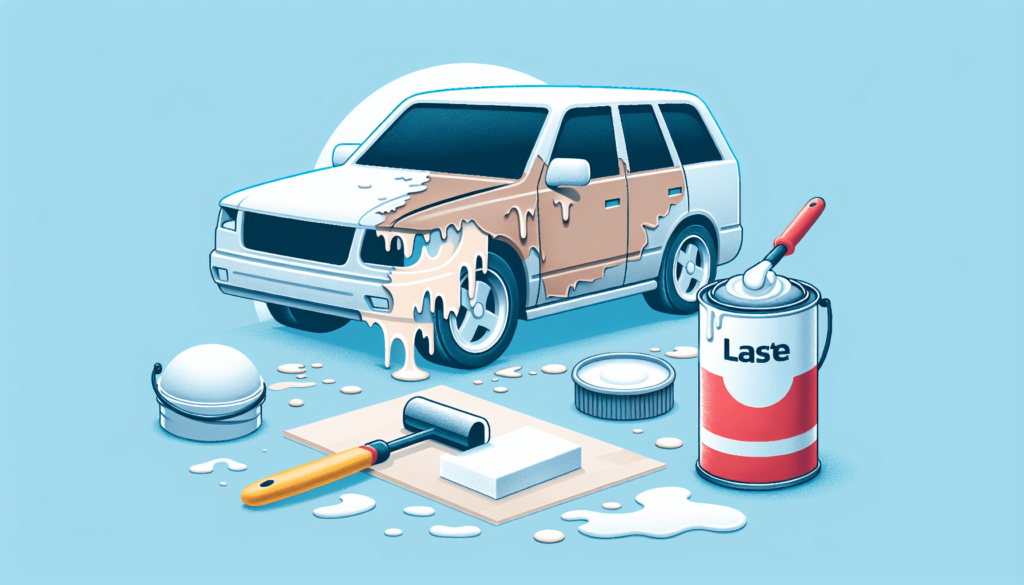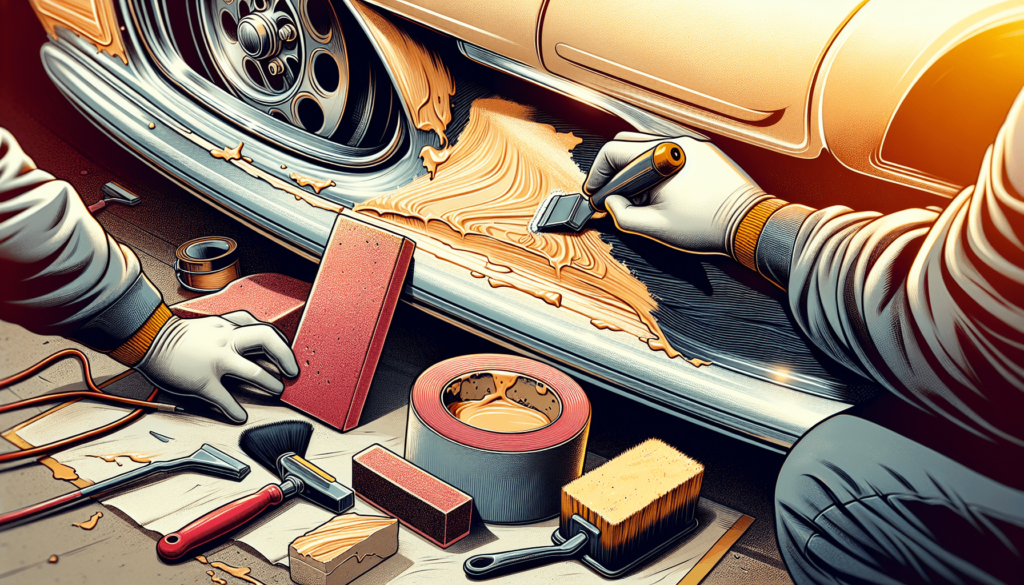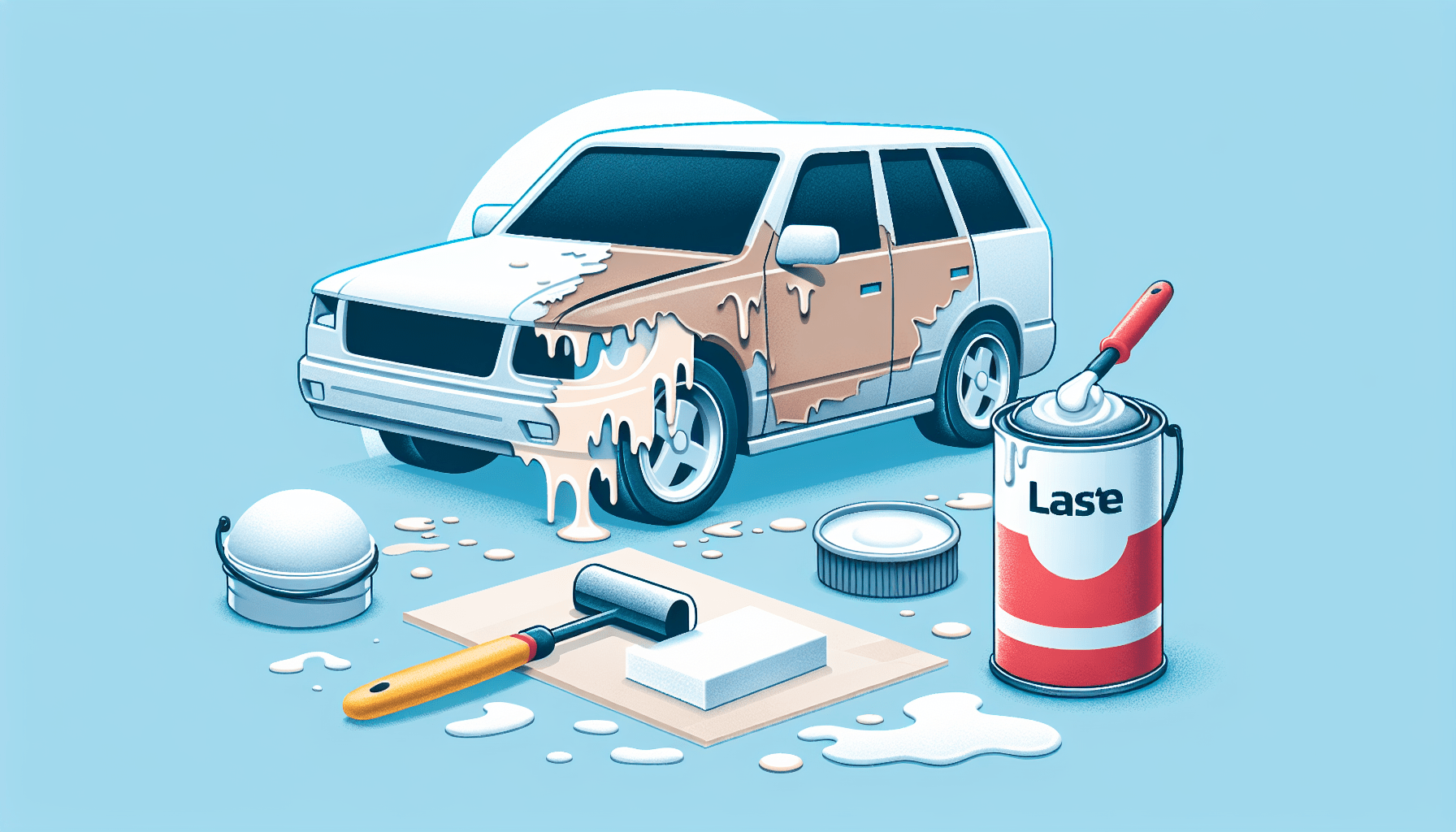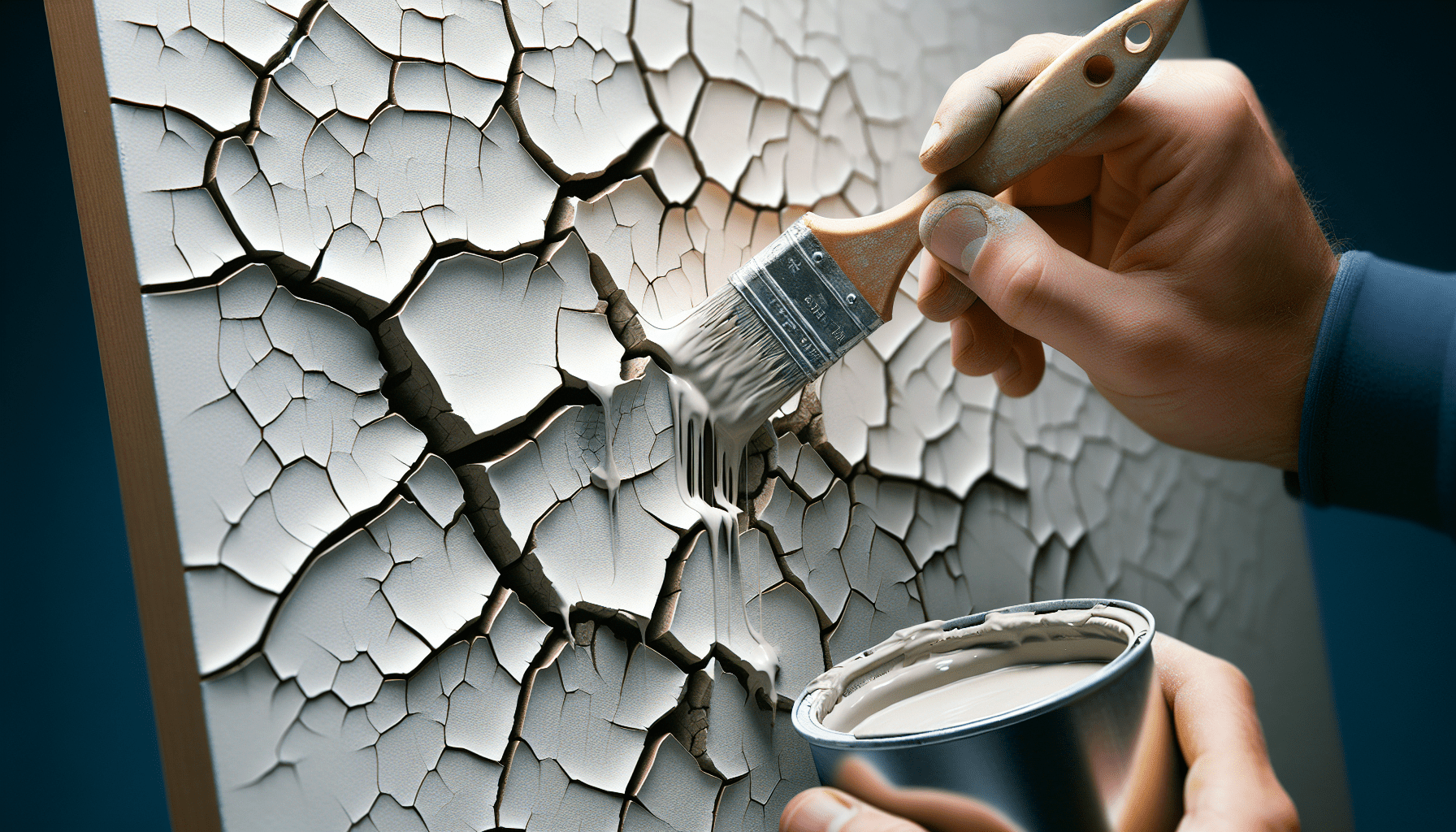Removing latex paint from your car can seem like a daunting task, but with the right techniques and tools, you can easily restore your vehicle’s pristine appearance. Whether it’s accidental splatters or a misguided graffiti artist, this article will guide you through the steps necessary to remove latex paint from your car’s exterior. From preparing the surface to choosing the appropriate paint removal method, we will provide you with a comprehensive guide to ensure a successful and seamless paint removal process. Say goodbye to unsightly paint mishaps and hello to a restored and polished finish that will make your car shine like new.

Prepping the Car
Before you begin the process of removing latex paint from your car, there are a few important steps you should take to ensure a successful and safe removal.
Gather necessary supplies
Start by gathering all the necessary supplies for the paint removal process. This may include a paint softener, a scraper, a pressure washer, rubbing alcohol or nail polish remover, commercial paint strippers, a bucket, a sponge, car wash soap, wax or polish, and protective gear such as gloves and goggles.
Choose a well-ventilated area
It is essential to choose a well-ventilated area for the paint removal process. This will help minimize the inhalation of any fumes or chemicals that may be involved in the process. A garage with an open door or an outdoor space with good air circulation would be ideal.
Protect surrounding surfaces
Since the paint removal process can be messy, it is crucial to protect any surrounding surfaces that you do not want to get damaged or stained. Cover nearby walls, windows, and other parts of the car that are not being worked on with plastic sheeting or drop cloths.
Clean the car surface
Before you begin removing the paint, it is important to thoroughly clean the car surface. Remove any dirt, dust, or debris using a car wash soap and a sponge. This will ensure that the paint removal process is more effective and efficient.
Softening the Paint
Softening the latex paint is a critical step in the removal process. It helps break down the paint and make it easier to remove without damaging the car’s surface.
Apply a paint softener
Choose a suitable paint softener specifically designed for latex paint removal. Apply the softener generously onto the painted area using a brush or sponge. Make sure to follow the instructions provided by the manufacturer for the best results.
Allow the softener to work
After applying the paint softener, it is important to allow it sufficient time to work. Typically, the softener needs to sit on the painted surface for a specified duration to effectively soften the paint layers.
Test a small area
Before proceeding with the full paint removal process, it is advisable to test a small area first. This will help you gauge the effectiveness of the softening process without risking any potential damage to the entire car surface. If the softener works as expected, you can continue with the remaining steps.
Removing the Latex Paint
Once the paint has been adequately softened, it is time to remove it from the car’s surface. Here are a few methods you can consider:
Scraping off the paint
Using a scraper, gently scrape off the softened paint from the car’s surface. Be cautious not to apply too much pressure or scrape too aggressively, as this can lead to scratches or damage to the underlying paint layers.
Using a pressure washer
If the latex paint is not too stubborn, you can try using a pressure washer to remove it. Ensure that the pressure washer is set to a suitable pressure level and hold it at a safe distance from the car’s surface. Move the pressure washer in a sweeping motion to help dislodge and wash away the paint.
Rubbing alcohol or nail polish remover
For smaller areas or spots of latex paint, you can apply rubbing alcohol or nail polish remover to a clean cloth and gently rub the affected area. The alcohol or remover will help dissolve the paint, making it easier to wipe away.
Commercial paint strippers
If other methods prove ineffective, you may consider using commercial paint strippers specifically designed for automotive use. Follow the instructions provided by the manufacturer and ensure you wear appropriate protective gear when using these products.
Cleaning up
After successfully removing the latex paint, it is essential to thoroughly clean up the car to ensure no residue or chemicals remain on the surface.
Rinse off any residue
Use a hose or bucket of water to rinse off any remaining paint residue from the car’s surface. Ensure that all areas are thoroughly rinsed to prevent any potential damage or staining.
Wash the car
After rinsing off the residue, wash the entire car using a bucket of soapy water and a sponge. This will help remove any remaining paint particles, dirt, or chemicals from the surface. Rinse the car again after washing to ensure all soap is removed.
Apply wax or polish
To restore the shine and protect the car’s surface, apply a layer of wax or polish. This will help seal the paint and prevent any future damage. Follow the instructions provided by the manufacturer for the best results.

Preventing Future Paint Mishaps
To avoid encountering this issue again in the future, it is important to take preventive measures to protect your car’s paint.
Avoid parking near paint projects
Be mindful of your parking choices and avoid parking your car near any ongoing paint projects or areas where overspray is likely to occur. This will significantly reduce the chances of your car being affected by stray paint particles.
Be cautious around wet paint
If you come across wet paint while driving or parking, exercise caution. Avoid touching or rubbing against wet paint to prevent it from transferring onto your car’s surface.
Use a protective car cover
Consider investing in a quality car cover to provide an extra layer of protection for your vehicle. This will shield it from potential paint mishaps and other environmental factors that could damage the paint.
Seek Professional Help
In certain situations, removing latex paint from a car may be more complex or require advanced techniques. In such cases, seeking professional help is recommended.
Consider professional paint removal services
If you are unsure about tackling the paint removal process on your own or if the paint is stubborn and difficult to remove, consider consulting with professional paint removal services. They have the expertise, tools, and experience to safely and effectively remove the paint without causing any harm to your car’s surface.
Handle complex cases
In some instances, the paint may have dried and adhered firmly to the car’s surface, making it challenging to remove. A professional paint removal service can handle these complex cases and employ specialized techniques to safely remove the stubborn paint.
Consult with auto body shops
Auto body shops are another valuable resource for advice and assistance with paint removal. They can provide recommendations, assess the situation, and offer expert guidance on the best course of action based on your specific circumstances.
Tips and Precautions
Here are some additional tips and precautions to keep in mind during the paint removal process:
Work in small sections
To ensure thorough and precise paint removal, work in small sections at a time. This allows you to focus on each area and prevents any accidental damage from rushing the process.
Use gentle and controlled movements
Avoid applying excessive force or making abrupt movements when removing the paint. Use gentle and controlled motions to prevent scratches or further damage to the car’s surface.
Wear protective gear
Always wear appropriate protective gear, such as gloves and goggles, when handling paint softeners, commercial strippers, or any other potentially harsh chemicals. This will protect you from any harmful effects they may have on your skin or eyes.
Test products on inconspicuous areas
Before using any paint removal products or techniques, it is advisable to test them on small, inconspicuous areas of your car’s surface. This will help you determine if the product is safe to use and if any adverse reactions occur.
Dealing with Stubborn Paint
If the latex paint proves to be stubborn and difficult to remove using the initial methods, there are a few additional steps you can take.
Repeat the softening process
Apply the paint softener once again to the stubborn areas and allow it to work for an extended period. This might loosen the paint and make it easier to scrape off or remove.
Use a fine-grit sandpaper
Consider using a fine-grit sandpaper to gently sand the stubborn paint. This should be done with caution to avoid damaging the car’s surface. Sanding should only be attempted by individuals with experience or under professional guidance.
Visit a professional
If the paint still persists despite your best efforts, it is advisable to visit a professional automotive painter or body shop. They can assess the situation and employ specialized techniques to safely remove the stubborn paint without causing further harm to your car.
Alternative Methods
If you prefer to explore alternative methods for removing latex paint from your car, here are a few options to consider:
Heat gun or hairdryer
Using a heat gun or hairdryer to apply heat directly to the painted area can help soften and loosen the latex paint. Be cautious not to overheat or damage the car’s surface. Always maintain a safe distance and use gentle, sweeping motions.
Eraser or Magic Eraser
A soft eraser or Magic Eraser can be effective in removing small spots or stains of latex paint from a car’s surface. Gently rub the affected area with the eraser, applying light pressure until the paint is lifted.
Baking soda paste
Create a paste by mixing baking soda with water and apply it to the painted area. Allow the paste to sit for a few minutes before gently scrubbing it off with a clean cloth or sponge. This method is best for smaller areas of paint.
Vinegar or lemon juice
Both vinegar and lemon juice have natural acidic properties that can help break down latex paint. Apply the vinegar or lemon juice directly to the painted area, allowing it to sit for a few minutes before wiping it off with a clean cloth.
Conclusion
Removing latex paint from your car can be a daunting task, but by following the appropriate steps and considering the methods suitable for your situation, you can successfully restore your car’s appearance. Remember to take preventive measures, seek professional help when needed, and always prioritize safety throughout the paint removal process. With patience and the right tools, your car can regain its pristine look in no time.



